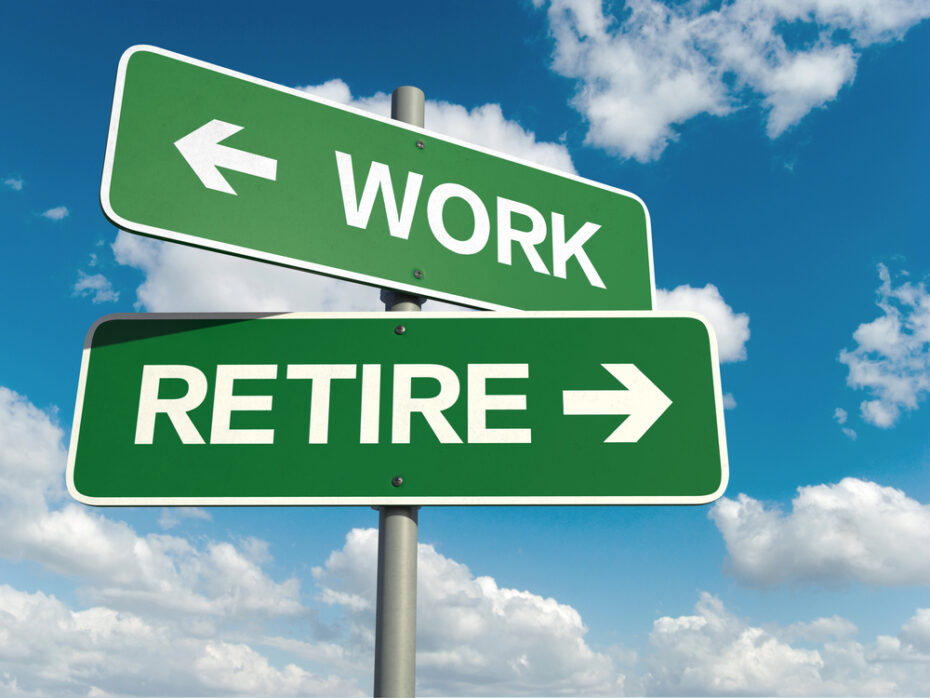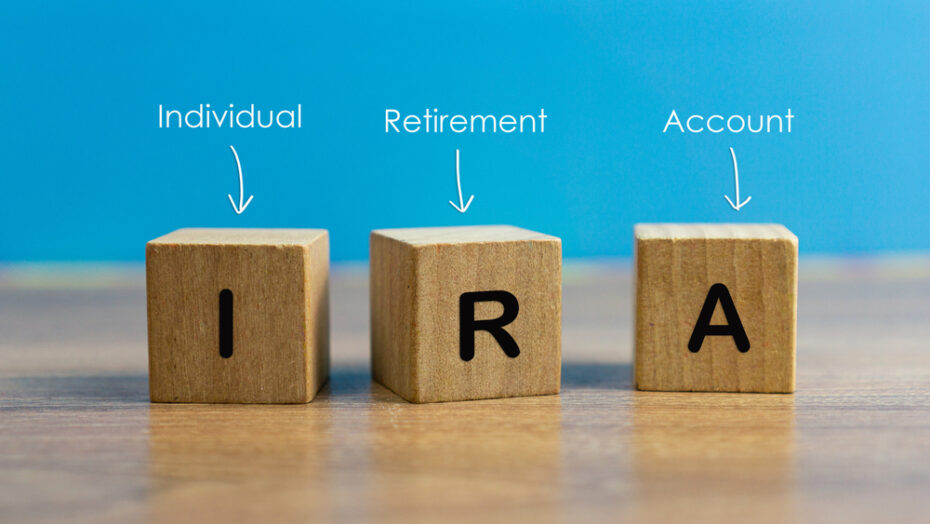How Long Will My Money Last? The Question All Retirement Seekers Must Ask

A lot of people know the importance of saving for retirement. However, the main question they have in mind is how much the “magic number” is and how long will my money last? Everyone who wants to eventually retire needs to know what size their financial nest-egg needs to be to enable them to retire comfortably and not run out of money.
In fact, statistics show that only 1 out of 10 Americans understand the technicalities of computing for their required money allocation. At the same time, only 14 percent of the population are confident enough that they will be able to survive using the money they have acquired from their retirement savings.
With this in mind, retirement experts revealed various strategies to compute how much you need to save. Some say that it should be near the $1 million mark. Others say that it should be 80 to 90 percent of your overall annual pre-retirement income. But much of it depends on age, retirement goals, location and other factors.
Read on to know and fully understand what’s the right approach for you. This article will shed light on your question “How long will my money last?”
How Much Do You Need To Retire?

There is no “one size fits all” formula out there that will guarantee a comfortable retirement. Life is unpredictable. Even with substantial savings, medical issues, economic changes, family requirements, and lifestyle can negatively impact your retirement savings.
Let’s start by looking at the experts recommended level of savings to help guide us. There are a few approaches used:
Multiples Of Your Salary
First off, we need to make a few assumptions in order to determine the levels of savings we’ll need. Specifically, we will assume that:
- Your savings is being invested and compounding at 6% per year. That means that the money you save continues to grow over time.
- You are retiring at 65 years of age
- You’re expecting your retirement income to last 30 years.
- You will continue living a similar lifestyle with similar expenses as you have today.
With these assumptions, experts (at JP Morgan Asset Management) have calculated what size savings you will need:
If you make $50K/year
- 35 years of age, you will need a retirement saving of $50K today.
- 45 years of age, you will need a retirement saving of $125K today.
- 55 years of age, you will need a retirement saving of $235K today.
- 65 years of age, you will need a retirement saving of $405K today.
If you make $100K/year
- 35 years of age, you will need a retirement saving of $200K today.
- 45 years of age, you will need a retirement saving of $400K today.
- 55 years of age, you will need a retirement saving of $700K today.
- 65 years of age, you will need a retirement saving of $1.3M today.
If you make $150K/year
- 35 years of age, you will need a retirement saving of $390K today.
- 45 years of age, you will need a retirement saving of $720K today.
- 55 years of age, you will need a retirement saving of $1.22M today.
- 65 years of age, you will need a retirement saving of $1.95M today.
In order to achieve this, it’s important to constantly be saving portions of your salary over time. It is critical to start early as the younger you are, the more compounding interest works in your favor. For example, if you have a salary of $150K at age 55 and have nothing in savings for retirement, it would be nearly impossible to accumulate $1.95M in 10 years without finding additional sources of income.
So start early. The more you can save while you’re under the age of 35 the easier it will be to accumulate what you need for retirement.
The 4 Percent Rule
One of the most direct computations to determine how much money you need for your retirement income is the 4 percent rule. All you have to do is divide your intended annual retirement income with a base of 4 percent. For example, if you expect that you will need $80,000 a year of retirement income, you will need a retirement savings amount of around $2 million. Simple divide the $80,000 by 4% (80,000/0.04).
So, why 4 percent? The math was calculated based on an assumption a 5% yearly return on investments minus the effect of inflation and taxes, your current lifestyle remaining the same into retirement, and no additional retirement income (no social security).
Replacement Income
The most common rule of thumb out there when it comes to retirement planning is to have set aside 80 percent of your annual salary. People refer to this as “replacement income.” This means that if you have a yearly income of $50,000, you need to have approximately $40,000 every year to spend for your retirement.
From here, multiply this value based on the numbers of years you expect to live in retirement. Your average life expectancy can be seen in this link. Different people retire at different ages, so the calculation for everyone will be different. The final number is the total minimum amount you should have for savings.
The benefit of this model is that you can see the impact quote easily of working a few more or less years and therefore can determine when you finally retire.
The Rule of 25
Another guideline introduced to the financial industry is the “Rule of 25.” It merely says that you should multiply your total yearly expenses by 25 to be able to come up with the amount you need for your retirement. Therefore, if you’re planning to spend $20,000 per year upon retirement, you should have at least $500,000 saved at that time.
Take note that the Rule of 25 is an excellent computation foundation. However, it is not a one-size-fits-all solution for every individual. You still have to take into consideration the impact of healthcare costs and inflation, alongside other expenses. While you may no longer have expenses like a mortgage and expensive commuting costs, expect other fees to arise.
The 1 million Rule
The 1 million rule simply states that every individual just needs approximately $1 million to be able to retire comfortably. Although many folks do use this as a rule of thumb, it just doesn’t take enough factors into consideration. If you live in an expensive city, in a country where there is no social healthcare, and you plan on doing a lot of traveling, then there is a good chance that $1M will just not cut it.
However, if you plan on living very conservatively, are in good health and have no real major expenses, this could be fine.
It is recommended to use some of other approaches to validate how well it maps to this $1M number for your specific situation.
Types Of Accounts For Your Retirement

One of the most important aspects of saving is to choose the best asset “allocation” for your needs. In fact, there are various retirement savings options that you should look into. Listed below is a summary of the more popular types of retirement accounts and how they work.
Retirement Plan Sponsored By Employer (403b, 401k, 457, etc.)
These retirement plans are managed by a company and allow you deposit money from each paycheck automatically. In some cases, a company will also contribute on your behalf as an extra incentive to work there. Most financial experts recommend having a company retirement plan. Some of the reasons why they do are written below.
- This retirement plan grows on a tax-deferred basis. This means that you won’t be required to pay taxes on its gains until the time that you have to withdraw the funds.
- More and more employer-sponsored funds are transitioning into a more portable strategy. This tactic refers to the ability for the plan to be transferred into an IRA or a future employer’s retirement plan using a rollover without having to worry about tax consequences.
- An average employer contribution ranges around 3 to 5 percent. However, other companies offer a whopping 10 to 20 percent income if you apply for a long-term goal requirement.
- Additionally, some larger companies can afford to place their money with very knowledge asset managers which means they have more steady returns at a higher rate then you could get as an individual.
Health Savings Accounts (HSAs)
Health savings accounts provide the best tax benefits out there in terms of out-of-pocket health care expenses. The higher your age, the higher the chances of acquiring both minor and major illnesses. If you invest in HSAs, you will have a nest-egg to pull from in case of something happens to you. Because of its nature, it can still be considered as a supplemental source of retirement income.
Individual Retirement Accounts (IRAs)
If your employers cannot apply for a 401(k) or a detailed retirement plan, you have the option to go for a traditional Individual Retirement Account or IRA. Investments under this option encompass a wide variety of financial products such as bonds, stocks, mutual funds, and ETFs. It also gives access to more investment selections like private placements, real estate, and tax liens.
Since IRAs are dedicated to retirement savings, the financial industry penalizes you for any early withdrawal. An early withdrawal pertains to the moment when you take the money out before the age of 60. There are even some IRAs which require you to pay income tax on these kinds of breaches.
Taxable Investment Accounts
Although tax-deferred investment accounts are your first option with tax-smart investing, payable accounts also have some benefits. For one, you can maximize the opportunity of tax-loss harvesting, and even low capital gains rates under this. There is also the flexibility to use the funds you earn from here, depending on your need and want.
How Long Will Your Money Last?

It’s not enough to simply determine how much you need to save to live a comfortable life after retirement. It’s also essential to understand how long this money will last given the various changes in life. To come up with the most accurate answer, make sure to address all of the factors listed below.
Rate of Return
The rate of return that you earn from your investments and savings is a significant contributing factor in determining how long your money will last. There are times where safer investments like government bonds and cash deposits are a better vehicle to hold on to due to their interest rate, but sometimes (especially in negative interest rate countries) it does not make sense. The fluctuation in financial markets (stocks, bonds, ETFs, mutual funds, etc) can also be concerning.
There will be instances where the returns from these investments will be at all-time highs. However, businesses undergo cycles. There will always be times where you’ll experience losses. Because of this, there is no one way to determine what your rate of return will be exactly. Therefore, you should come up with another approach.
To compute for the most accurate rate of return, you can consider the historical returns of both your best and worst-case outcomes. The longer the time, the more reliable your data will be. Once you have come up with these two extremities, you can then get the average of these two. You may even have the option to run different scenarios to determine the most accurate value for you.
If you don’t have time to do it, be conservative. The market has averaged a 10% return on investment over the past 30 years. You can choose to pick a lower number like 6% for your calculation to ensure you are properly managing the potential risk from the various economic cycles.
Amount You Withdraw
Traditional retirement plans base their process on something called withdrawal rate. For instance, you have an accumulated amount of $100,000 annual income, and you take out $5,000 per year, then your withdrawal rate is at 5 percent. Related to this is what experts refer to as the sustainable withdrawal rate. This term briefly describes the maximum amount you can withdraw every time without having to worry about running out over your lifetime.
A lot of studies were conducted to be able to come up with the most apt sustainable withdrawal rate. Based on the results, it lies anywhere between three percent to around six percent per year. It also depends on how much you have invested, how you increase your withdrawals to consider inflation, and what your time horizon plan is (20 years versus 30 years, for example).
To determine how long your money will last, the best way to start is to create a plan that will map out your withdrawal rate. Do not only consider your historical performance but make sure to include your expected rate on your entire retirement time horizon. Put into the equation the presence of social security support and the start of pension as well because with the absence of these in the earlier years, then there might be a need to withdraw compared to other years.
Sequence Of Returns
Whenever you are taking out money from your accounts, the order that you experience returns, also known as the sequence returns, matters. Let’s say that in the first 5 to 10 years of your retirement, all of your investments produced outstanding returns. You may be able to live completely on the income generated from your principle and never have to withdraw from that principle. That is the best case scenario and provide you the best opportunity for long terms retirement stability
On the other hand, if these sources of income do poorly at the beginning of your retirement years, you may be forced to spend some portion of your principal to cover your living expenses. It will be more difficult for you to recover financially at that point. This also means that the chances of your money lasting will decrease.
So, what is the best thing to do to avoid the second scenario? As a retiree, it is your job to plan and test out the different possible outcomes. If you see that there is an unfortunate sequence of returns on your early retirement years, come up with concrete plans to address this by trying to reduce your expenses and re-balancing your investment portfolio. Your money will last longer if you enable a downward adjustment to your lifestyle and spending.
How And When You Spend Your Money
The biggest retirement mistake you will undergo is under-estimating your money needs due to spending and unforeseen expenses during retirement. A lot of people forget to consider other operating expenses that may incur throughout their lives. Some examples include home repair expenses, loans, new cars, and health care expenses.
At the same time, another mistake is to assume that their investments will always perform the same. If the rate of returns of your investments performs very well in the beginning years, there is a tendency for you to assume that you can spend your gains in real-time. However, it does not work that way.
Keep in mind that the high returns you receive post retirement should be stashed away in a corner. Its role? To subsidize the poor returns that may occur in the later years. In short, if you withdraw all of your gains upon obtaining it, then there is a significant possibility that your retirement plan will be in trouble come 10 to 15 years down the road.
Health Care Expenses
Always keep in mind that health care upon retirement is not free. There will be times that Medicare will cover some of your expenses, but that won’t be the case at all times. Research shows that Medicare covers around 50 percent of health-related costs on average. Studies also showed that lower-income retirees almost spend 30 to 40 percent of their living expenses for health-care-related items.
The best way to go about this is to estimate your retirement health care cost accurately. Make sure that your assumption will be at its maximum level and that you will spend your full deductible every year. This tactic will ensure that you will have room for emergency spending. This is better than coming up short.
Inflation
Think about it. Most things cost more than they did fifteen years ago. The reason behind this is inflation. So, what is the long-term impact of inflation on your money for retirement? To be able to explain this concept fully, you have to reflect first whether you are a part of the lower-income households or the higher-income households.
Research proved that inflation has a lesser impact on higher-income households. This is because these people spend more on the “extras” or the non-essentials, which can be given up should the inflation rates get high.
On the other side, inflation has a more significant impact on lower-income households. They allocate most of their money on necessities such as food, energy, and accommodation. Whenever prices rise, these individuals do not have other things on their budget, which they can cut out. They have to put more effort into covering the said necessities.
Another item to consider, however, is that the effect of inflation might be eliminated should you reach your later retirement years (75 years old and older). Your spending habits tend to slow down at that point, which could offset the rise in prices.
Forecasting Your Retirement Budget
To be able to manage your retirement fund fully, you need to accurately forecast your retirement budget. Here is a guide that you can follow to do so.
- List down all your past and current expenses and categorize them into fixed, variable, or mixed.
- Examine per category and make adjustments. For example, if you think that you will stay in your current home in the next few years, then you can quickly determine whether you will be mortgage-free at retirement or not. You will then be able to take note of your costs.
- Delete some items under your budget that you think you won’t need after retirement. For example, you may omit the category work transportation and professional clothes since these are not necessary anymore after you retire.
- Add items that you think are more necessary after your retirement. For instance, you may allocate an additional budget for a special diet or your medical expenses.
- Add items that you want to do in your retirement years. You may include playing golf and traveling on your list.
Final Words
Once you have followed the step-by-step process, you will be able to determine the minimum amount that you need for your retirement. This will help you formulate a plan on how to go about with your retirement years.
It may be a good time to look into other passive and active income ideas that you can do during retirement that can help create some revenue to offset gaps in your planning. Here is a thorough guide to money making ideas online